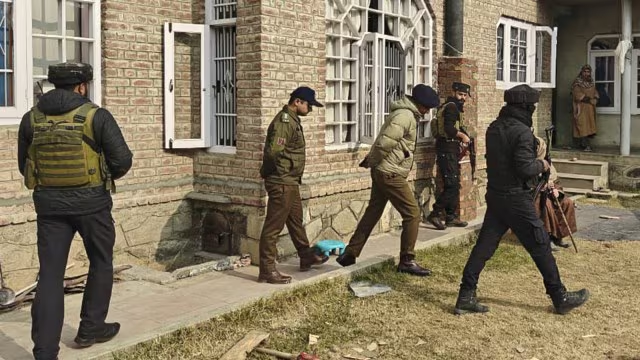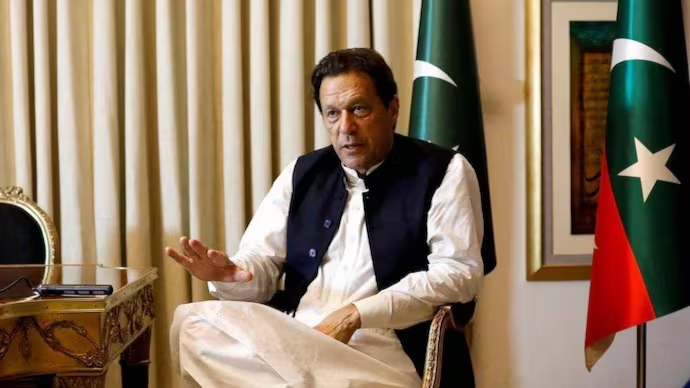Horror's Role in American History: Horror, a genre often dismissed as lowbrow entertainment, is the subject of Columbia University professor Jeremy Dauber's latest book, American Scary: A History of Horror, from Salem to Stephen King and Beyond. Dauber's exploration of the deep roots of horror in American history and culture reveals a genre that is far from static. Instead, it constantly evolves to reflect the country's darkest fears, from supernatural threats to real-life violence, and the anxieties that have gripped America throughout the centuries.
Horror's Deep Cultural Roots
"For most of American history, horror wasn't considered a genre," Dauber explains. "It was just part of human experience—what people read, wrote, and thought about." Indeed, classic American authors such as Nathaniel Hawthorne, Henry James, and even William Faulkner dabbled in stories of the eerie and supernatural. For these writers, horror wasn't a niche interest; it was a vehicle for exploring the darker aspects of human nature.

Dauber divides horror into two main categories: cosmic and supernatural horror, involving monsters, ghosts, and otherworldly forces, and the more personal, human horror, which can manifest as murder, war, or other forms of violence. Both have been prominent in America's history, as fear has always been intertwined with the country's development.
A profound fear of diabolical forces marked the early colonial period. In the 17th century, Puritan settlers, profoundly religious and wary of Satan's influence, fell into paranoia that culminated in the infamous Salem Witch Trials. Hundreds of people—primarily women—were accused of witchcraft, and 19 were executed. This real-life horror, driven by fear of the unknown and mistrust of neighbors, has echoed through time, finding its way into American storytelling and horror literature.
The Influence of History on Horror
While the Salem Witch Trials may be one of the earliest examples of real-life horror influencing culture, Dauber identifies several historical events that shaped the modern horror genre. The post-World War II era, in particular, was pivotal. The bombings of Hiroshima and Nagasaki, along with the ensuing Cold War, introduced a new existential fear: humans now had the power to destroy the world.
This anxiety was mirrored in the alien-invasion films of the 1950s, such as The Day the Earth Stood Still and The War of the Worlds. These films often depicted extraterrestrial threats as metaphors for the possibility of nuclear annihilation. The horrors of the Holocaust, which revealed the depths of cruelty humans could inflict on one another, also left an indelible mark on the genre, leading to films like The Sadist (1963), which delved into the psyches of sociopaths and psychopaths.
The late 1970s and early '80s economic downturn further fueled horror's evolution. As American industrial cities began to decline, the concept of haunted houses and crumbling towns became prevalent in stories like Stephen King's Salem's Lot and the 1979 film The Amityville Horror. The decaying physical environment was a fitting metaphor for the fear of societal collapse.
The 1980s also saw the rise of the AIDS epidemic, which brought with it a surge in horror films focused on bodily infection and transformation. David Cronenberg's 1986 remake of The Fly, with its grotesque portrayal of a man's body being ravaged by a virus-like transformation, captured the paranoia and fear surrounding disease and contagion during that time.
More recently, horror films have continued to reflect America's contemporary fears. Jordan Peele's Get Out (2017) deals with the ongoing racial tensions in America, exploring themes of exploitation, control, and systemic racism. The 2020 adaptation of The Invisible Man shifts focus to stalking and domestic violence, shining a light on the everyday horrors faced by many women. Meanwhile, The Handmaid's Tale, both the book by Margaret Atwood and its TV adaptation, has come to symbolize the fight for women's bodily autonomy and the fears surrounding its potential loss.
Technology and the Evolution of Horror
Horror has always been shaped by the technology of the time in terms of how it is consumed and depicted. For instance, the advent of sound in the film allowed horror to evolve from the silent terror of the early 20th century to the shrieks and screams that define modern horror. "The rise of the 'scream queen' really began with the coming of sound films," Dauber notes.
Television also had a significant influence on horror. In the 1960s, horror entered people's living rooms with shows like The Addams Family and The Munsters. These programs softened the genre, turning it into something more comedic and family-friendly while retaining macabre elements. The rise of the Internet in the late 20th and early 21st centuries opened new doors for horror, with myths and memes like Slenderman taking root in online communities.
But it's not just the mediums of horror that have evolved; the themes have also kept pace with technological advancement. Dauber points to The Terminator (1984) as a prime example. "On one hand, it's about a killer robot from the future," he says. "But it's also a product of exactly when answering machines became popular." In the film, the Terminator mimics people's voices over the phone, a chilling commentary on the increasing pervasiveness of technology in everyday life.
The Rise of True Crime and Documentary Horror
While fictional horror has thrived for centuries, recent years have seen a surge in the popularity of true crime, with podcasts, documentaries, and streaming services offering a near-constant supply of real-life terror. Dauber sees a clear connection between the two. "Many people are drawn to real-life horror stories," he says. “One of the effects of true crime is that it can make us feel like threats are more present than they statistically are.”
The 1980s and '90s were the heyday of "stranger danger" and "Satanic panic" when a few high-profile child abduction cases led to widespread fear and hysteria. Although statistically rare, these events gripped the public's imagination, making it seem like danger lurking around every corner. Similarly, the recent boom in true-crime media can give people a heightened sense of the prevalence of crime, even if the actual risk remains low.

Dauber points to the TV show Only Murders in the Building as a clever satire of this phenomenon. The series follows a group of neighbors who start a true-crime podcast to investigate a murder in their building, playing on the modern obsession with crime stories and the sometimes absurd lengths people go to in their quest for the truth.
Why We Are Drawn to Horror
So, why do we continue to seek out horror, whether in the form of true crime or fictional monsters? Dauber believes the answer lies in something as old as Aristotle's concept of catharsis. "We have so many fears, whether cosmic or tangible, but ultimately, we can't do much about them," he says. Watching horror films or reading scary stories gives us a safe space to confront those fears. "It allows us to experience fearful things in a controlled environment," he explains. “That can be cathartic.”
In the end, horror serves as both a reflection of and a release from our deepest anxieties. The genre provides a space to explore the darkness without being consumed, whether it's the cosmic dread of the unknown or the more immediate fears of violence and societal collapse. As America's fears continue to evolve, so will the stories we tell about them. For more global updates, keep exploring Education Post News.

















